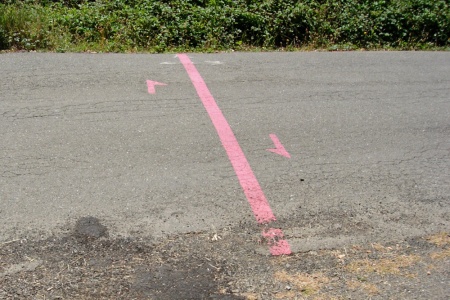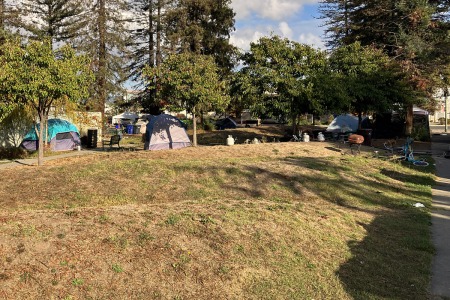Lately I’ve been going through my bookshelf and revisiting some memorable titles by and about geology, from the 1830s to today. Today I want to share three standout books of particular relevance to Oakland readers, all by the late Philip L. Fradkin (1935-2012). They constitute his “earthquake trilogy,” published between 1998 and 2005. They all concern our particular place between the Pacific and North America plates. They’ve stuck in my mind for decades and still inform my approach in this blog.
Fradkin offered this explanation of the trilogy on his former website:
As a journalist and resident of California since 1960, I am quite familiar with disasters, having observed all types and having been a victim of fires and floods. I wrote in The Seven States of California that there were three ways to deal with such disasters: leave the state, take up religion, or live one day at a time, the last being my personal preference.
So I set out to explore the splitting of the earth’s crust, my designated batter for exploring the effect of nature on humans, first in a general overview and California-centered book, Magnitude 8, then in a wilderness setting, Wildest Alaska, and finally in an urban setting, The Great Earthquake and Firestorms of 1906. In this manner my Earthquake Trilogy unfolded.
As he hints, his treatment goes beyond mere earthquakes to explore the ways we carry on our lives on a planet capable of dealing us death and wholesale destruction. What follows is based on reviews I wrote long ago somewhere else. Both the books (all still in print) and the reviews have held up well.

Palm oases mark the San Andreas fault trace near Indio.
Magnitude 8: Earthquakes and Life along the San Andreas Fault sets the gold standard for treatments of California’s seismic side: the geology, geography, history and political significance of our earthquakes. Fradkin presents not just the familiar cautionary facts and arguments, but also the peculiar sardonic attraction of California’s all-but-official state hazard and the effect of earthquakes on its landscape and inhabitants. He visits the fault’s full length, from Shelter Cove to Bombay Beach and beyond. Like me, he’s more curious about the fault than fearful of it, while aware of its constant threat. He was the same kind of day-at-a-time Californian as me, although I unlike him would not build my house practically upon it.

Phil Stoffer stands by the creeping San Andreas fault near San Juan Bautista.
Wildest Alaska: Journeys of Great Peril in Lituya Bay explores the relations between landscape and culture in America’s most dangerous locality. Fradkin called this his most personal book. Lituya Bay is a rugged fjord in remote southeastern Alaska crossed by the Fairweather fault, whose frequent earthquakes launch huge masses of glacier ice and rockslides into the water causing colossal tsunamis. The bay’s entrance on the stormy Gulf of Alaska, barred by a glacial moraine, is navigable for only minutes at slack water in good weather. Nature looms there, and the human presence is precarious. Even the book’s geologists feel the chill along the spine, and the ghosts of the bay, witnesses to repeated catastrophe since ancient times, reach surprisingly far into our world. Fradkin went there “to explore the dread,” my phrase in Deep Oakland. I too have visited Lituya Bay, and our cold Pacific fog reminds me, like him, of that perilous place. The great natural forces so heightened there are great here, too. Our local libraries do not have this title, but it’s precious to me.

In 1906 the San Andreas fault ruptured here, near Fort Ross.
The Great Earthquake and Firestorms of 1906: How San Francisco Nearly Destroyed Itself is a sweeping, definitive survey of the iconic American urban disaster that delves into how the city’s movers and shakers responded. As Fradkin’s publisher put it, “after the shaking stopped, humans, not the forces of nature, nearly destroyed San Francisco in a remarkable display of simple ineptitude and power politics.” The aftermath is the subject that scares me the most when I think about the Hayward fault, and there are important lessons for Oaklanders at all levels of citizenship. Both in 1906 and after hurricane Katrina in 2005, the bedrock of human nature fractured in very similar ways. What happened there will happen here some day. Fradkin’s journalistic presentation of original material brings the great quake to life from beyond the veil. He has the best stories, including many no one else has found. The Internet Archive maintains a copy.
A theme that crosses all three books, one I barely touch on in my own Deep Oakland, is that while we can venture into wild nature expecting its dangers and tasting its corresponding thrills, wild nature is just as capable of visiting its dangers on us at home. Earth and civilization are not separate things, and both are prone to break along known fractures. These are books to study when you’re ready for the next level.




